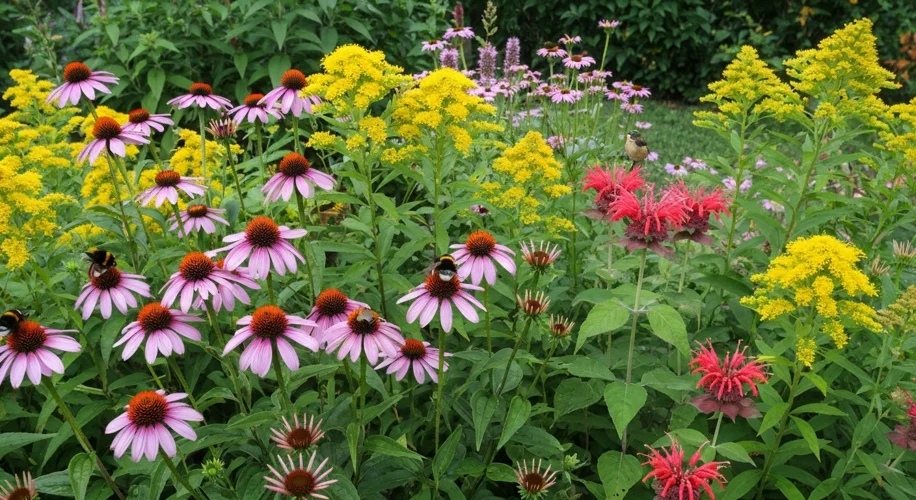It’s August 11, 2025, and I’m standing in my backyard, which looks nothing like it did just two years ago. What was once a pretty standard suburban lawn is now a vibrant, buzzing haven for pollinators. This transformation wasn’t overnight, but it’s been one of the most rewarding gardening projects I’ve ever undertaken.
When I first decided to create a pollinator garden, my goal was simple: attract more bees, butterflies, and birds. I wanted to create a space that was not only beautiful but also functional for our local ecosystem. I started with a plan to focus on plants that are native to our Midwest region and are known keystone species – plants that support a disproportionately large number of other species.
Year One: Laying the Foundation
My first step was research. I learned that a successful pollinator garden isn’t just about planting flowers; it’s about providing a continuous food source and habitat throughout the seasons. I decided to focus on native plants because they are best adapted to our local climate and soil conditions, and they provide the most benefit to native insects.
I started by removing a section of my lawn. This was probably the hardest part, giving up that traditional green carpet. I used sheet mulching (lasagna gardening) to suppress the grass and build up the soil with organic matter. This method involves layering cardboard, compost, leaves, and other organic materials directly on top of the grass. It takes time, but it creates fantastic soil without tilling.
Then came the planting. I chose a mix of perennials and some annuals for quick color. For early spring blooms, I planted Serviceberry (Amelanchier spp.), which provides early nectar and berries for birds. For summer, I focused on Coneflowers (Echinacea spp.), Bee Balm (Monarda spp.), and Milkweed (Asclepias spp.). Milkweed is crucial because it’s the sole food source for Monarch butterfly caterpillars.
I also included plants that bloom in late summer and fall, like Goldenrod (Solidago spp.) and Asters (Symphyotrichum spp.), to ensure pollinators have food as the season winds down.
Year Two: Watching It Thrive
This past year, I’ve seen a dramatic difference. The garden is teeming with life. I’ve noticed an incredible variety of bees – bumblebees, mason bees, sweat bees – visiting the flowers. Monarch butterflies are a common sight, and I’ve even seen Swallowtail butterflies flitting around.
Beyond the insects, the bird activity has also increased. Birds like chickadees and finches are drawn to the seeds and insects found in the garden. The native plants I chose, like the Coneflowers, continue to provide seed heads for birds well into winter.
One of the most surprising things has been the sheer variety of insects I’ve observed. Beyond the typical bees and butterflies, I’m seeing beneficial predatory insects like ladybugs and lacewings, which help keep pest populations in check naturally.
What I’ve Learned
- Patience is Key: A garden takes time to establish. Year one was about building the soil and planting; year two is when it really started to show its full potential.
- Native Plants Matter: They are hardy and provide the most ecological value.
- Diversity is Crucial: A mix of plants with different bloom times, shapes, and colors provides resources for a wider range of pollinators.
- Embrace a Little Wildness: Don’t be afraid to let some plants go to seed. Those seed heads and dried stalks provide crucial overwintering habitat for many insects.
Transforming my backyard into a pollinator paradise has been a journey of learning and observation. It’s a reminder that even small spaces can make a big difference for nature. If you’re looking for a rewarding gardening project, I can’t recommend creating a pollinator garden enough. It’s a feast for the eyes, a haven for wildlife, and a truly joyful way to connect with the natural world right outside your door.

